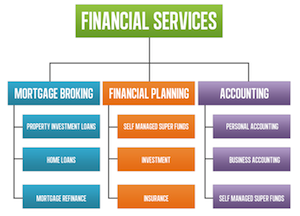Search engines rank webpages based on relevancy to a particular search term. Relevancy, however, goes beyond an individual page’s content. Search algorithms also consider domain authority/relevancy and a number of offsite factors such as links from other web pages and this is where content silos play a key role.
The intrinsic authority and relevancy of a domain is built up over time through the content of a website as a whole. The more content that is indexed on a site based around a specific theme(s), the more authority will be ascribed to that site for particular topics.
As an example, which would you consider more worthy to rank in search results, a recipe page on a health food site or a mechanic’s site? So you would not be surprised to discover search algorithms follow the same logic.
A phrase that has been coined in SEO (search engine optimisation) circles for building and structuring website content is the building of “content silos”. The concept behind this is the architecting of a website around themes that dictate the content you add to your site, how it is added into your website page hierarchy and how pages link to each other. The term siloing originated as a way to identify the concept of grouping related information into distinct sections within a website.
A well planned content silo will show the search engines domain relevance, while also making it easier for the search engines to index the pages you want. It will also increase the “link juice” that is passed through your site from external web pages.
The 5 Stages of Planning Your Content Silos
There are a number of stages to properly executing your content silos. The distinct stages are:
- Keyword research
- Grouping keywords
- Prioritising & structuring keywords into silo structure
- Writing/Rewriting Content for your content silos
- Planning your ongoing content strategy
Keyword Research For Your Content Silos
How you start your keyword research is very much determined by the amount and quality of the traffic you are currently receiving.
If you have an older site, hopefully you have some form of website analytics to review. From the website analytics you can gather an idea of how people are getting to your site and the pages they are viewing. Something like Google Webmaster Tools even tells you what Google thinks you are relevant for.
What themes and search terms are you currently ranking for? List these down and see what common themes arise from your data analysis and categorise keywords accordingly. This will help you in selecting keywords when you research later on. Seeing what your website ranks for now may allow you to replicate the strategy in your silo pages.
As you move into expanding your keyword groups, there are other sources to get your keyword research going, which may include any data from pay per click campaigns like Google Adwords or even input from business stakeholders and past clients.
You can use what you have discovered to use a keyword tool like Google’s Keyword Planner that gives you an idea of search volume to further expand and/or prioritise the keywords you will be targeting in your website’s content based on what Google has identified people are searching for.
Grouping Keywords into Content Silos
Having conducted your keyword research, it is now time to work out the best way to group your keywords. You will want to group your keywords into sets of related terms. You should further sort each group into primary keywords (topics) and secondary keywords (subtopics).
Content Silo-Driven Website Architecture
 Now that you have a set of topics and subtopics grouped and prioritised, you can now work on the structure of your website. Keep your topics and subtopics up to three or four levels only (one level may have more than one page, e.g. if you have integrated a blog with categorised posts). It will be easier for your visitors to find the information they need, and easier for search engine bots to crawl and index all pages of your site.
Now that you have a set of topics and subtopics grouped and prioritised, you can now work on the structure of your website. Keep your topics and subtopics up to three or four levels only (one level may have more than one page, e.g. if you have integrated a blog with categorised posts). It will be easier for your visitors to find the information they need, and easier for search engine bots to crawl and index all pages of your site.
Typically each silo will have it’s own place in the site’s navigation with a dedicated page for each topic and subtopic. You will then take it further with extra pages and posts to your blog linking within a content silo and to the top of the silo. The goal of this structure is to pass “link juice” down through a content silo and often back to the top of the silo to create an interlinked, very relevant structure around your key search terms.
Content For Your Content Silos
The idea of a content silo is to group relevant information to a topic or theme. During keyword research you will have identified a list of keywords that had merit based on the number of people searching for a particular search term.
In general, if there is sufficient search volume around a keyword and you believe there is a chance to rank for that search term then it should have a dedicated page. At the same time you should consider the user experience and whether you are adding any extra value in each page – adding an extra page that is almost identical to another just so you can target the plural of a word, for instance, is not a good idea.
Your Ongoing Content Strategy
Once you have done the groundwork for your content silos and added them to your website, then it does not stop there. You now have themes for structuring your content marketing strategy. Based on the themes/topics you have identified you will be able to:
- Assign people/departments in your business to produce content based on expertise-topic match
- Set up a content publication calendar to work to. How often should something be published for each topic?
- Identify platforms/channels for distributing your content. Start from your blog and then decide how it will be distributed – could an article be turned into an infographic, press release or even a video.
Time after time, studies have shown that sites with more pages get more traffic but for most people knowing how to get started is the hardest thing. Having a plan to “Write a blog post per week” does not work. You need structure around a content strategy:
- Content Cycle: If you have 4 main topics, then have a 4 week content cycle where one topic is covered per week.
- Blog Topics: Use your keyword research to come up with the blog topics/titles. You may be able to come up with your whole year’s content plan in one go and you will never have to worry about wondering what to write. This list does not need to be set in stone though – a great idea or something topical might come up that you can insert into the list.
- Writing Your Blog Post: Now that you know what to write the process becomes a lot easier. With a plan you wont suffer from “writer’s block” such that you put it off and it never gets done as other priorities come up.
- Distribute Your Content: Good quality content is a great way to generate inbound traffic but you need to address a few questions. Who will be responsible for distributing your content? What channels are most appropriate to your target market? Will it be simply sharing a link or will the content need to be redone to a more appropriate medium, e.g. press release or video?
A Long But Rewarding Process For Your Business
You probably realise this is not something that can be done in an afternoon. Every stage will take time, but consider every new page you create is another page for Google to index and once you start, you will be surprised at all of the unexpected search terms you get found for.
Above the consideration of how this will increase your search engine rankings consider how a properly structured website with plenty of relevant content that is easy to navigate will improve the user experience. Think on the credibility this gives you as people navigate further into your site and recognise your expertise in what you do.
I hope I have given you a way to get this started, but perhaps you recognise that due to limited internal resources and marketing expertise in your business this may be something that will keep getting put off. If that is the case, consider what you can do and what parts could be outsourced to an agency like ours that supports businesses through this process from consulting to a full done for you service.










